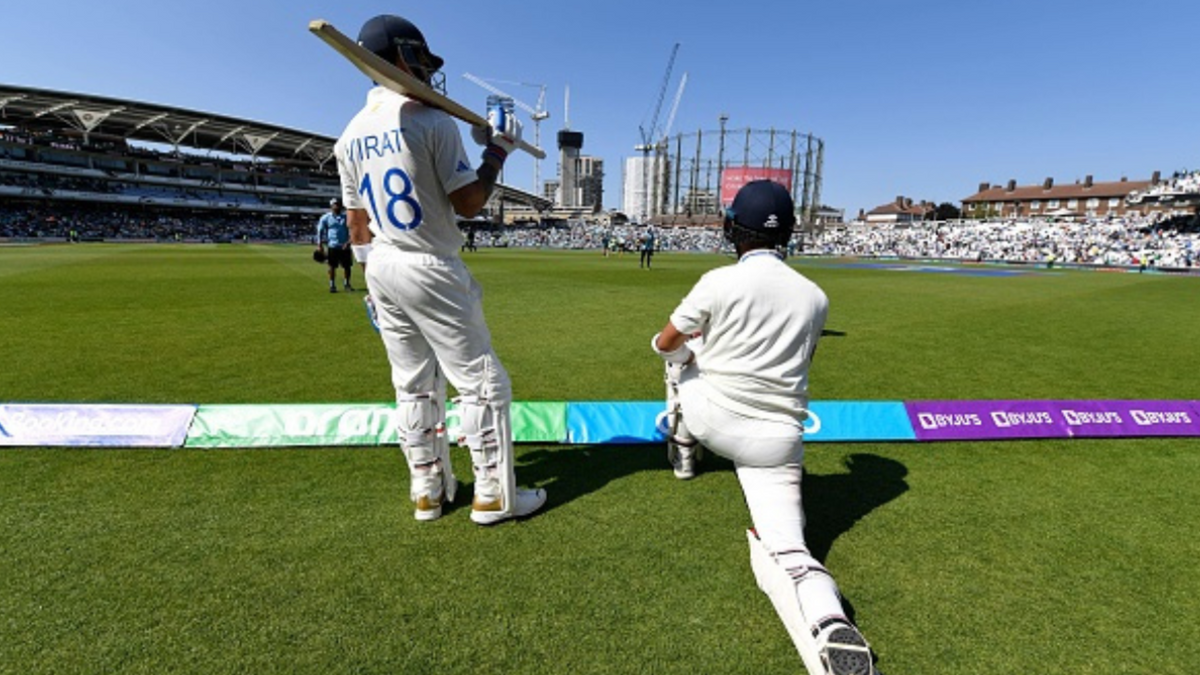
Cheteshwar Pujara and Virat Kohli both average 29.69 in Test cricket since the start of 2020. Yet, while the former has been dropped, the latter continues holding onto his spot, writes Sarah Waris.
Sunil Gavaskar recently lashed out at the BCCI selectors for dropping Pujara for the tour of West Indies: “[Is it] Because he does not have a million followers on whatever platforms, who would make a noise in case he gets dropped?”
As absurd as his reasoning sounds, he may have a point. The toxic world of social media will not spare anyone if their opinions do not suit the narratives of their preferred. Ask me, who had the honour of being slandered and parodied, and having had loyal supporters demanding my removal from the organisation – for bursting the bubble on their favourite players.
Now put yourself in the selectors’ shoes where you actually drop an underperforming superstar. Or “rest” them. You might as well go underground, delete social media accounts, not attend press conferences and cease to exist until people get worried – but only as a ruse as you continue to pick teams mysteriously… oh, wait.
If you still do not have a clue of what I am talking about, Gavaskar had hinted at Kohli. After India lost the World Test Championship final, Gavaskar had hit out at Kohli’s shot selection in the second innings, where he top-scored but failed to last a session on the final day as India collapsed to a 209-run defeat. Kohli was dismissed for 14 and 49, narrowly missing out on his seventh 50-plus score in 38 innings since 2021.
Kohli has toppled off the pedestal. He is no longer part of the Fab Four since the pandemic. While correlation need not be causation, Kohli’s form has taken a nosedive since Covid-19. He lacks the familiar flow and momentum, while his technique has been questioned time and again.
Since the start of 2021, Kohli averages 31.37 in Test cricket at a strike rate of 45, the third-slowest in the world among batters with at least 1,000 runs in this period. Pujara’s 39 is the only sub-40 instance.
In the era of Bazball, Pujara’s old-world approach to the game was nostalgic but India’s successes also relied on the players who could bat at a higher pace with him. Throw your mind back to the Gabba.
In the last five years, Pujara has been a part of five 150-plus stands – two with Rohit Sharma (2019, v South Africa and 2021, v England) and one with each of Prithvi Shaw (2019, v West Indies), Rishabh Pant (2021, v Australia) and Kohli (2018, v Australia). Four of these – the one with Kohli being an exception – came at a run rate of over three. The 153-run stand between Rohit and Pujara at the Kia Oval is especially interesting. Rohit had been batting with a strike rate of 35 with KL Rahul, but made 91 in the next 152 balls with Pujara to keep the rate ticking.
Currently, with Kohli striking at 45, India’s Nos. 3 and 4 are unable to keep the run-scoring going, increasing the pressure on the openers to increase the tempo from the very start. The absence of Pant is undoubtedly huge. The inclusion of Yashasvi Jaiswal, the likely No.3 against the West Indies (first-class strike rate of 68) is also aimed at releasing the scrutiny on Kohli as he finds his footing back in the format.
However, Gavaskar has questioned exactly that: why should two senior players be treated differently?
Pujara vs Kohli in Tests since 2020
Pujara has been India’s top run-scorer in Tests since 2020, making 1,455 runs, but consistency has been an issue. Since 2020, four Indian batters average between 25 and 30 – Ajinkya Rahane (26.50), Mayank Agarwal (26.64), Pujara (29.69) and Kohli (29.69).
Rahane was not in the Test circuit for 18 months, though he has now been named vice-captain, while Agarwal, and now Pujara, have been dropped.
In the last 12 months, Pujara has been India’s top run-scorer, with 482 runs at an average of 40.16, the second-best average among Indians with more than five Tests, and only behind Axar Patel. Pujara, thus, has been India’s best specialist batter recently, while Kohli averages 33.53 despite his 186 against Australia.
If Kohli’s recent resurgence in white-ball cricket is used as a defence, Pujara’s form in the last year along with his Sussex success should go in his favour. If one goes by tough oppositions, Pujara’s heroics in Australia in 2018/19 and 2020/21 as well as his 206-ball 45 at Lord’s need to be mentioned. He is still good at the role of blunting attacks out, as he faces 131 balls per match since June 2022, more than any other India batter.
Pujara is 35, and bringing in youngsters is perhaps a step in the right direction, keeping the 2023-25 World Test Championship in mind.
But what does not ring right is their happiness to continue with an injury-stricken skipper of 36; a vice-captain who earned a recall following his IPL heroics at 35; and an underperformer who hangs on due to past laurels at 34.
While we are all for transition and keeping the ball rolling, we cannot gauge the yardsticks that were used by the selectors for dropping one player and persisting with the other underperformers. Maybe, just maybe, it did come down to social media numbers.*
*The above comment is purely in jest before the writer’s own social media account is flocked and dissected yet again.








